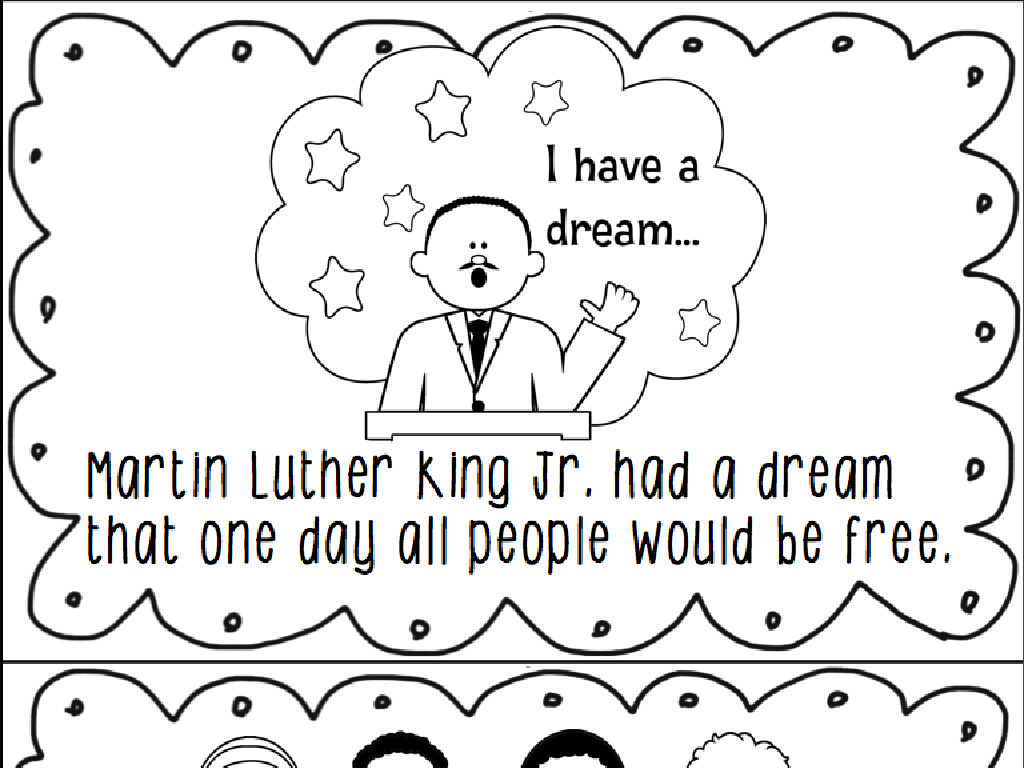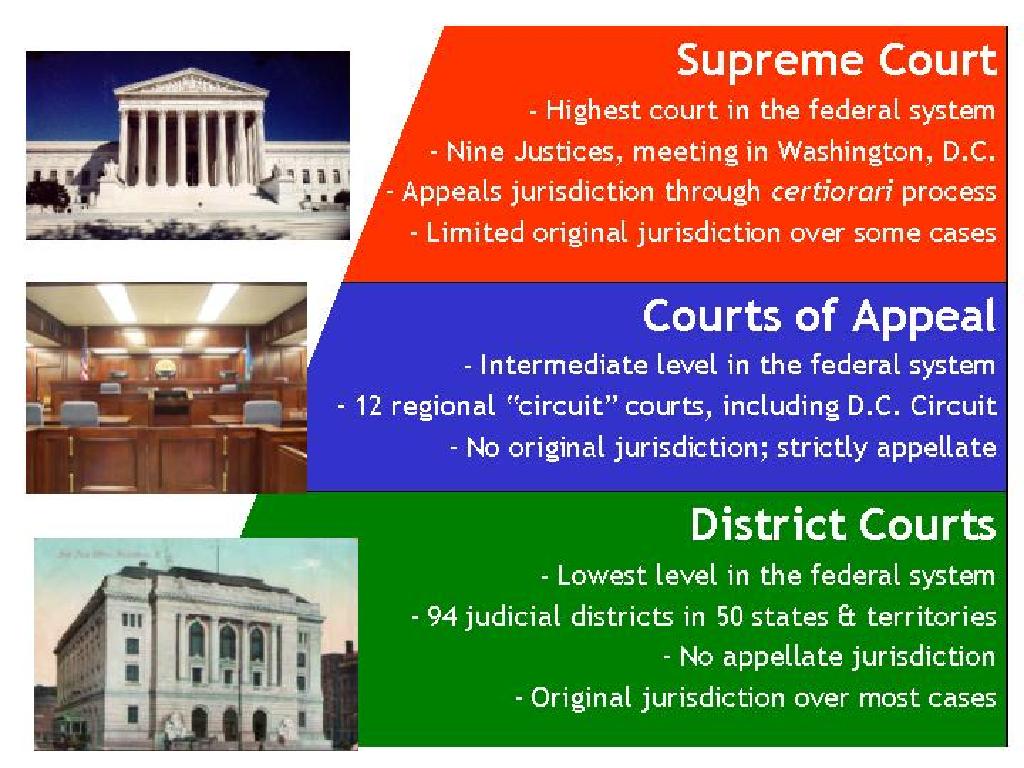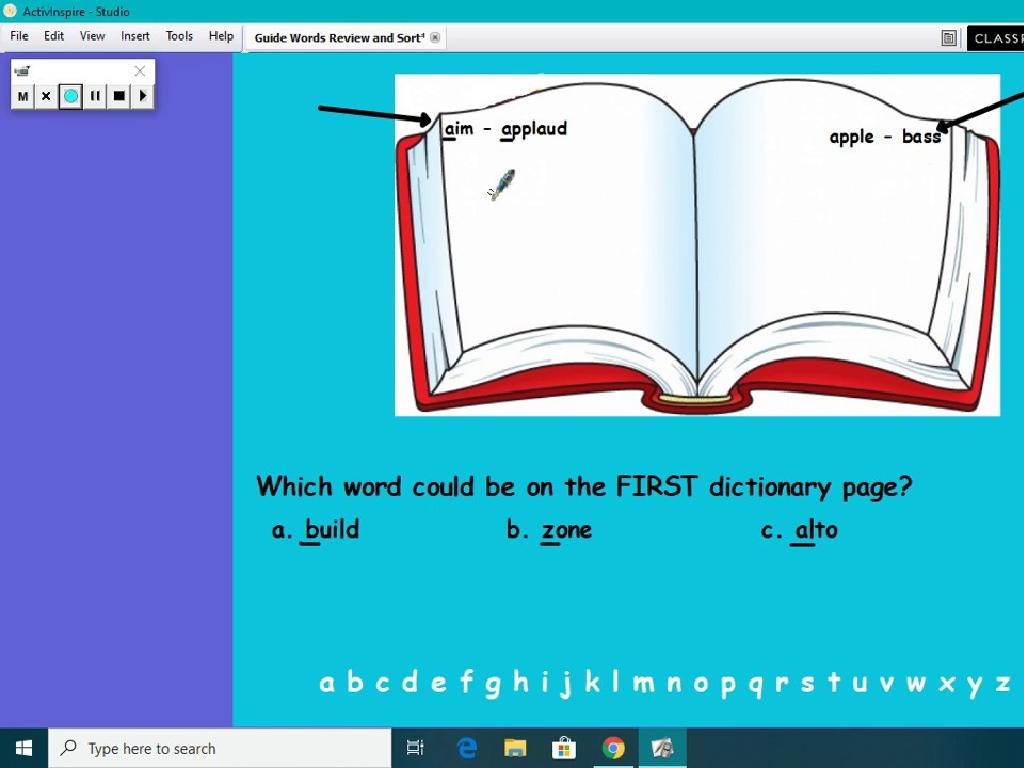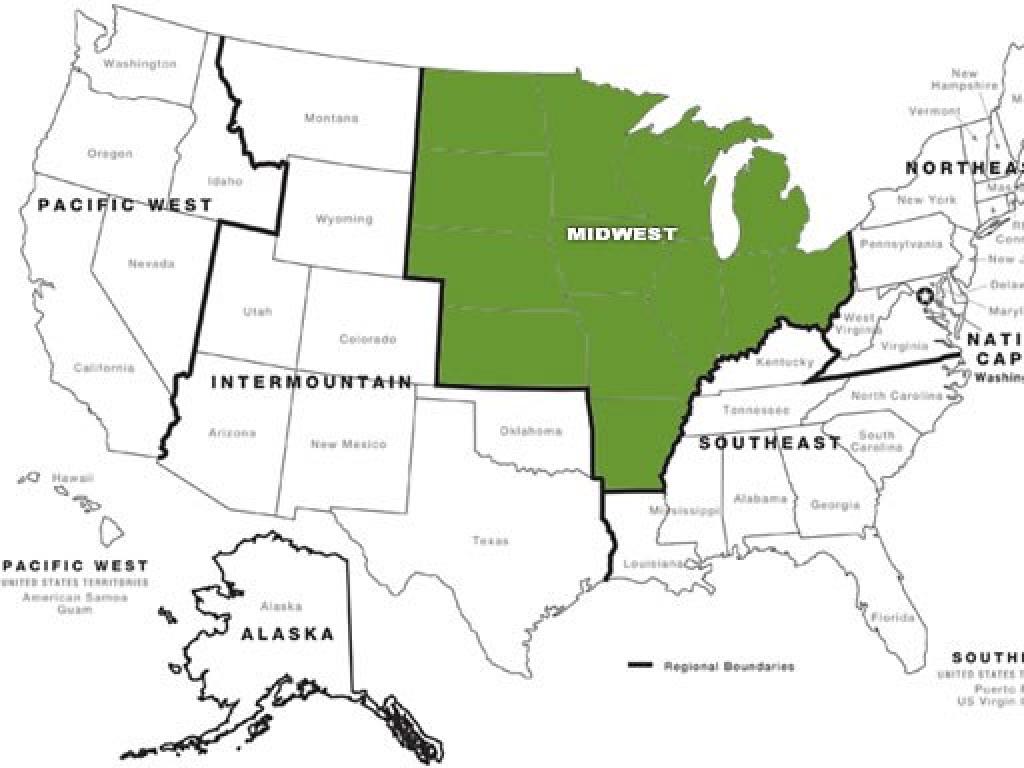Counting Forward - Up To 120
Subject: Math
Grade: First grade
Topic: Counting To 120
Please LOG IN to download the presentation. Access is available to registered users only.
View More Content
Welcome to Counting!
– Greetings First Graders!
– Today’s goal: Count to 120
– We’ll learn to count from 1 all the way to 120
– Counting is fun!
– We’ll play games and sing songs to count together
– Counting helps us every day
– We use counting for many things like telling time and buying snacks
|
This slide is designed to introduce first graders to the concept of counting forward up to 120. Start the lesson with a warm greeting to make the students feel comfortable. Explain that the goal for today is to be able to count all the way to 120. Emphasize that counting can be a fun activity by incorporating interactive games and songs that engage the students. Also, highlight the practical uses of counting in everyday life, such as telling time or purchasing items, to show its importance. Encourage the students to participate actively and reassure them that it’s okay to make mistakes as they learn to count to higher numbers.
What is Counting?
– Counting helps us know numbers
– No need to guess, just count!
– Count things like toys and steps
– For example, how many blocks are in your toy box?
– Counting is useful every day
– We use counting to know how many items or people are present
|
This slide introduces the concept of counting to first graders. Emphasize that counting is a basic math skill that helps us determine the quantity of items without guessing. Use everyday examples that are relatable to the students, such as counting toys, steps they take, apples in a basket, or even their friends in the classroom. Encourage them to think of other things they can count. This will help them understand the practicality and ubiquity of counting in their daily lives. During the lesson, engage the students with hands-on counting activities to reinforce the concept.
Counting Forward: Numbers 1 to 20
– Counting from 1 to 20
– Let’s count together: 1, 2, 3, …, 20
– Each number is one more
– 2 is one more than 1, 3 is one more than 2, and so on
– Practice counting aloud
– Understanding number sequence
– Numbers follow each other in a specific order
|
This slide introduces the concept of counting forward from 1 to 20, which is a foundational skill in mathematics for first graders. Emphasize that each subsequent number is one more than the previous number, helping students understand the concept of ‘one more’ and the sequential nature of numbers. Encourage students to practice counting aloud as a class to build their confidence and fluency in counting. Use visual aids like number lines or counting blocks if possible to reinforce the concept. The goal is for students to recognize the pattern and become comfortable with the number sequence up to 20.
Counting by Tens to 120
– Counting by tens is fast
– Instead of 1 by 1, we jump 10 numbers each time
– Practice counting: 10, 20, 30, …
– Start at 10, then say 20, and add 10 more each time
– Let’s reach up to 120 together
– We’ll do this as a class until we hit 120
|
This slide introduces students to the concept of skip counting by tens, which is a foundational skill in mathematics that helps with understanding place value and prepares them for multiplication. Start by explaining that counting by tens is like hopping from one number to the next, skipping nine numbers in between. Use visual aids like a number line or counters grouped in tens to illustrate the concept. Engage the class in a counting activity, having them count aloud together from 10 to 120 by tens. Encourage them to use their fingers to represent each count of ten. This interactive approach will help solidify their understanding and make counting more enjoyable.
Counting from 21 to 120
– Counting starts after 20
– Practice: 21 to 30
– Let’s count in class: 21, 22, 23, … up to 30
– Continue beyond 30
– Keep adding one: 31, 32, 33, …
– Aim for the big 120!
– Our goal is to reach 120 step by step
|
This slide is aimed at helping first graders understand the concept of counting forward starting from 21 up to 120. Begin by explaining that after 20, we simply continue to add one more to the previous number. Engage the class in a counting activity from 21 to 30 to practice this concept. Encourage them to continue this pattern beyond 30, emphasizing the sequential nature of counting. The ultimate goal is to reach 120, reinforcing their understanding of number sequence and building their counting skills. As an activity, you can have students count aloud in unison, count using objects, or write numbers on a board. For advanced students, introduce counting by 2s, 5s, or 10s to reach 120 more quickly.
Using a Number Chart to Count to 120
– A number chart as a counting tool
– Visual aid for understanding numbers
– Point and count each number
– Helps with number recognition
– Recognize patterns in numbers
– See how numbers are organized
– Counting practice up to 120
|
This slide introduces the use of a number chart as an effective visual tool to help first graders understand the concept of counting forward up to 120. The chart will serve as a guide for students to follow along with their finger or a pointer, which reinforces number recognition and sequencing. Highlight the patterns that numbers form in the chart, such as the repetition of the last digit in each column. Encourage students to practice counting daily using the chart, starting at different points to build their familiarity with the sequence of numbers. This activity will also help them recognize the base-ten number system inherent in the chart’s layout.
Let’s Practice Counting!
– Count items in our classroom
– Use blocks or crayons for counting
– Each block or crayon represents one number
– Understand numbers through objects
– Visual and hands-on learning with items
– Counting up to 120
|
This slide is designed to engage first-grade students in a hands-on counting activity. By counting familiar objects like blocks or crayons, students can better visualize and understand numerical concepts. The activity should start with smaller numbers and gradually increase to counting up to 120. Encourage students to group items in tens to simplify the counting process and to understand the base-ten number system. The teacher should walk around the classroom to assist and ensure that students are counting correctly. Possible activities include counting items in groups, lining up objects, or creating simple addition problems using the objects. This practical approach helps solidify the concept of counting and number sequence in young learners.
Counting Forward Fun Game!
– Let’s play a counting game
– Form a big circle with friends
– Take turns counting aloud
– Each friend says one number after another
– Keep going until we hit 120!
– What comes after 119?
|
This activity is designed to help first graders practice counting forward in a fun and interactive way. By forming a circle and taking turns, each student will say the next number, starting from 1 and going up to 120. This will not only help them with number sequencing but also with listening skills as they must pay attention to the number said by the previous student. For the teacher: Be prepared to assist if a student gets stuck and encourage the others to cheer them on. You can make the game more engaging by introducing a soft ball to toss around as they count, or by playing music and having them count to the rhythm. If time allows, consider breaking the class into smaller groups and having multiple circles counting simultaneously. This will give each student more opportunities to participate.
Counting Forward Mastery
– Celebrate your counting success
– You’ve done a fantastic job with numbers today!
– Practice leads to perfection
– Keep practicing counting every day to get even better.
– Each of you is a counting star
– Just like stars in the sky, you shine bright with your counting skills!
|
This slide is meant to conclude the counting session on a positive note, reinforcing the students’ confidence and encouraging them to continue practicing. Highlight the importance of consistent practice to improve their counting skills. Acknowledge each student’s effort, making them feel like ‘counting stars’ for their achievements. As a follow-up, suggest parents to involve counting in daily activities, like counting toys during cleanup or steps while walking, to make practice fun and engaging. Remember to celebrate every little progress to keep the motivation high.
Class Activity: Counting Relay Race
– Form teams for relay race
– Pass a baton, count up each pass
– Start at 1, next person says 2, and so on
– Aim to reach 120 before other teams
– If you reach 120, your team wins!
– Cheer on your teammates!
|
This activity is designed to make learning to count up to 120 fun and interactive. Divide the class into small teams and give each team a baton. They will pass the baton to each other, and each student must say the next number in the sequence, starting from 1 and aiming to reach 120. This will help reinforce their counting skills and encourage teamwork. Make sure to supervise the activity to ensure fair play and accurate counting. Possible variations include counting by 2s, 5s, or 10s for advanced practice. Celebrate all efforts and encourage students to support their peers throughout the game.






